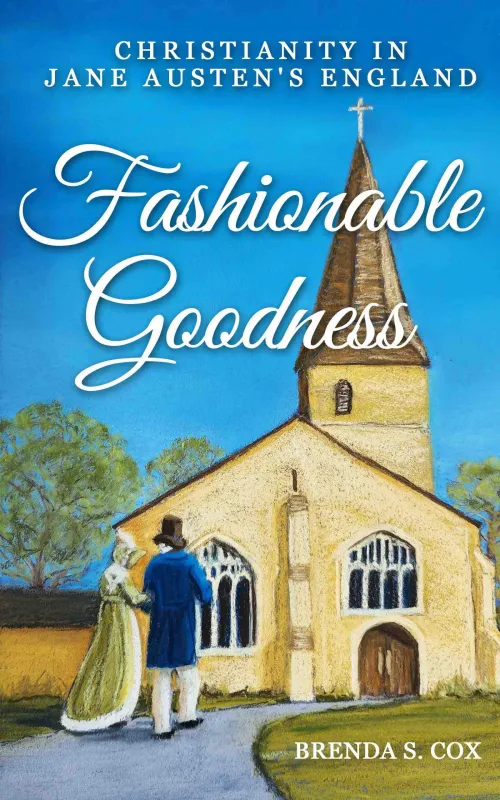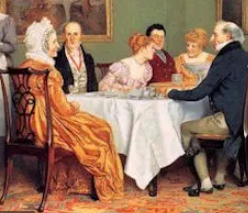
Georgian town houses in Bath

Cutaway of a Bath town house
When we think of Regency architecture we think of the beautiful Georgian architecture so popular in Bath and Brighton. While there were subtle variations in design and detail, the basic plan for First Rate houses was similar to Fourth Rate houses*.

Bath Regency town house
- The basement, or subterraneans section: All except the poorest houses had basements. They were occupied by the kitchens and other servant offices. The housekeeper and cook might be given rooms in this area away from the maids who slept in the attic.
- Ground floor: The drawing room was placed near the front door so that it was easily accessible. Drawing rooms were a place to greet visitors and where the women of the house could retreat. The humbler parlor was generally a private room where the family could retire. Furnishings in the drawing room were generally more feminine than those in the adjacent dining room. Double doors would lead to the dining room, which was more austere and masculine in nature. After dinner the men would remain there to enjoy conversation over port and cigars, while the women retreated to the drawing room. The closer the dining room was located to the kitchens, the warmer the food remained when it arrived at the table.
- The first floor: Featured a large room for entertaining on a grand scale, such as dancing, card playing, or other fashionable pastimes. This floor might also hold the principal bedrooms, which were generally placed in front of the house. The bedrooms would be decorated lavishly and in the latest style.
- The second floor: Featured bedrooms for children, or perhaps a lodger or guests. Little expense went into decorating the nursery in comparison to the lower bedrooms. As the levels rose, the complexity of room decorations were simplified since fewer visitors bothered to climb the stairs to the upper levels. In general furnishings, mouldings, and decorations were modest on these floors.
- The attic: Reserved for the servants, whose beds were often like murphy beds and let down from the wall. These rooms were cheaply painted and furnished.

Georgian houses: first rate, second rate, and fourth rate
Throughout the 17th century, London houses had been susceptible to big fires that swept through narrow, twisting lanes in the city’s center and houses made of timber. A series of Rebuilding Acts specifying building construction followed the Great Fire of 1666 that destroyed over 14,000 houses. A rise in population generated demand for housing, encouraging land owner to develop large tracts of land. The Building Act of 1774 prescribed how houses were to be built. The act specified the use of stone or brick and determined the width of the street, the size of the houses, floor to ceiling heights, and the layout of the houses. It also defined the four types of houses that could be built in London. Each of these types were standardized and followed strict building guidelines:
First Rate House: Worth over £850 per year in ground rent and occupied over 900 square feet of space. These houses faced streets and lanes.

First rate house
Second Rate Houses: Worth between £350 and £850 in ground rent and occupied 500-900 square feet of floor space. They faced streets, lanes of note, and the RiverThames.

Second rate house
Third Rate Houses: A smaller house worth around £150-£300 and occupied 350-500 square feet. They faced principal streets.
Fourth Rate House: Worth less than £150 per year in ground rent and occupied less then 350 square feet. These houses stood in their own ground.
About ground rent:
Land owners improved their land by laying out roads and services. They then charged rent on this land. Housing developers (landlords) would build spec houses on the improved land and generate an income from leaseholders by collecting rent. Sometimes the land owner and the house landlord were the same person. These people were usually owners of great estates, which were better managed and the most sought after. Original leases were for as little as 33 years, but by the end of the Georgian era the length of time for many leases was increased to 99 years.
Curiously, the people who paid rent on large houses belonged to the nobility or gentry or prosperous merchants. While they did not own the houses they lived in, they received enormous incomes from their properties and businesses.
- Leasehold Auction: Bermondsey
- Lawrence & Chris, The Period House: Style, Detail & Decoration, 1774 to 1914, ISBN 0-75380-119-1
- Parissien, The Georgian House, The Aurum Press, 1995
- Johnson, History & Structure of the London Terraced House
- London Terraced Houses
- Brunswick Square








This is such an interesting post! I live in a first floor flat in what I have identified from your post as a second rate house, in Bath. Of course, I don’t have access to the other floors, and the house has been modified quite a bit to create flats, which is why it’s so fascinating to see what it might have looked like before.
No 1 The Crescent is open to visitors, and has the same layout as you have described, with large 1st floor entertaining room and 1st floor bedroom excellently decorated. It also has a huge basement kitchen, which is very light and airy due to the large windows.
Thanks for sharing this : )
Very interesting post. What do you think of Netherfield Park in 1995 Series? It only has 2 levels, hasn’t it? (Yuck! Talking about observation skill, I have watched it more than 50 times but couldn’t remember if it’s 2 or 3 levels now)
I guess country manors are different from town house. So all the parlour, game room, music room etc will be on the ground floor? How many rooms are there in Netherfield? How many rooms will there be in a first rate house in Bath? (haha, I’m sounding like Mr. Collins now)
Steamy Darcy
Fascinating—I never knew that townhouses were rated just like ships were!
Thanks for that article Vic!
All I can think is poor servants for having to climb up and down those stairs! I’ve always found it odd in period dramas how guests arrive and head upstairs. I keep forgetting that they entertained up there whereas in our homes, the upper floors are mainly for bedrooms.
Beautiful post. That first picture sure brings back memories. When I visited Bath in 2007, there was an apartment unit, about 1,500 s.f. for sale in The Crescent, the semi-circle spectacular bldg. with the great city view. The asking price was £550,000. Well, I was just looking.
Great post, Vic! I’ve been just looking up period doll’s houses. They remind the model on your picture.
Thank you for the wonderful article!
[…] front door of the home of Captain Collin Yates, his best friend. Collin and Susan Yates live in a First-Rate Georgian rowhouse in Portsmouth. I wish I could show you pictures of the interiors and furnishings of most of the […]
It’s helped me understand an assignment I’m working on… thanks so much for a clear, consise, easy to read and interpret post!!
Hi, I am an avid player of sims (i know lol) and lately i have been dying to recreate a town or manor house from late 17th early 18th century. i am wondering if anyone might have a floor by floor layout of the upper class’s typical town house.
Here’s one. It’s in Mayfair, so it’s the correct location. Of course, the bathrooms are new additions.
http://www.wetherell.co.uk/extrafiles/bespokeweb/leaman_pages/brochure4.htm
I lived in a georgian house built in 1798 in londons Fitzrovia. This house was purchased by my Grandmother in 1936. it had, at some time in Victorian times been converted into bedsit, which it still was when my family moved away in 1970. It has now been converted into 5 flats.
It sits on land which was once home farm, own by the Earl of Southampton, and green lane, which is now Euston road was the road used to take milk and live stock into the city of London.
Love your info on Georgian houses, most beautiful around.
I’m curious. Is there a word to describe the gated off area in front of the house with stairway leading down? I’m speaking out of ignorance but it seems a lot of Georgian townhouses have this characteristic.
I believe you mean the servants entrance to the basement. The servants and tradesmen would never use the main entrance, but would always pass through the gate, go down the stairs and enter through the kitchen. But I’m not sure if there is another name for it besides “servants entrance”.